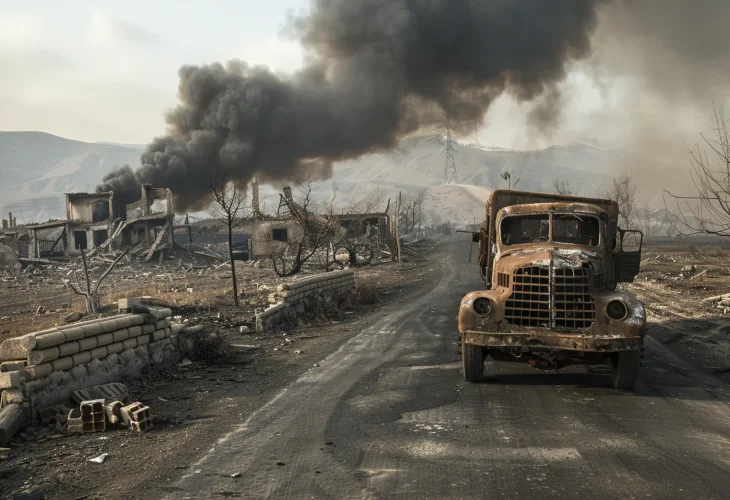A Hidden Trap: The Tragic Attack that Shook a Community
A mine was hidden under the dog's body. It was remotely activated from a nearby Arab ice factory. The truck exploded and caught fire. Some guards were killed instantly, while others were brutally attacked by a mob.

On January 22, 1948, a pickup truck departed from the gates of the community at Mikveh Israel. Founded in 1870, Mikveh Israel was both an agricultural school and a settlement. Today, it's located a few hundred meters south of Highway 1, bordered on the west by the Holon interchange.
At present, Mikveh Israel marks the southern edge of the sprawling city of Holon. However, back then, it was an isolated settlement south of Tel Aviv. The Jewish community paved a special security route to reach Mikveh Israel without having to pass through Jaffa to Tel Aviv Road, which went through the hostile Abu Kabir. This road cut through what is now Ariel Sharon Park, formerly the Hiria landfill. A special bridge was erected over the Ayalon River (now diverted into the Ayalon Freeway), providing a relatively safe passage to Mikveh Israel.
Yet, from Mikveh Israel to the next Jewish settlement south, Rishon Lezion, no special road was laid out. One had to pass near the hostile village of Yazur. The main Jaffa to Jerusalem road (now Highway 44) intersected the village, and it was the only route to Rishon Lezion.
In the pickup truck leaving Mikveh Israel for Rishon Lezion were seven guards. Their duty was to ensure the road was clear and safe. Regularly, Jewish vehicles were stoned by Yazur's residents. The British prohibited the guards from traveling in armored vehicles to avoid offending the Arabs... That day, trucks were secretly transferring airplane parts from Akir (now Tel Nof base) to the winery in Sharona. The guards were traveling in an open truck. As they approached Yazur, they saw a dog's body on the road. They swerved slightly to avoid it, and behind it was a mine. Remotely set off from a neighboring Arab ice factory, the truck exploded and burst into flames. Some guards were killed on the spot, and others were brutally attacked by a rioting mob that emerged at them.
The British, standing by passively, did not allow the Jews even to recover the bodies. Only after persistence with an anti-Israel Scottish officer were they finally permitted to collect the remains.
The seven martyrs were buried in Nahalat Yitzhak Cemetery, but the residents of Yazur paid the full price: 25 villagers were killed that day by Palmach forces, and several village houses were later bombed. On February 20, 1948, marking thirty days since the massacre, the ice factory was blown up. Fifteen of the attackers were killed. By April 1948, all of Yazur's residents had fled, despite British efforts to keep them there. The remaining attackers escaped to the Rafah refugee camp, and a Jewish settlement named Azor was established in place of the hostile village. The area had been a Jewish settlement since the First Temple period, and in the annals of Sennacherib, it's noted that he captured 'Azoru' from the Israelites. Two thousand seven hundred years later, it returned to Jewish hands.
Uniquely, the residents of Azor now use a former Muslim structure as a synagogue. Built during the Byzantine era, the building served as a church, later transforming into a mosque called 'Maqam Imam Ali'. At a later stage, it was known as 'The Mosque of Nine Domes', and today it bears the name 'Shaarei Zion Synagogue'.

